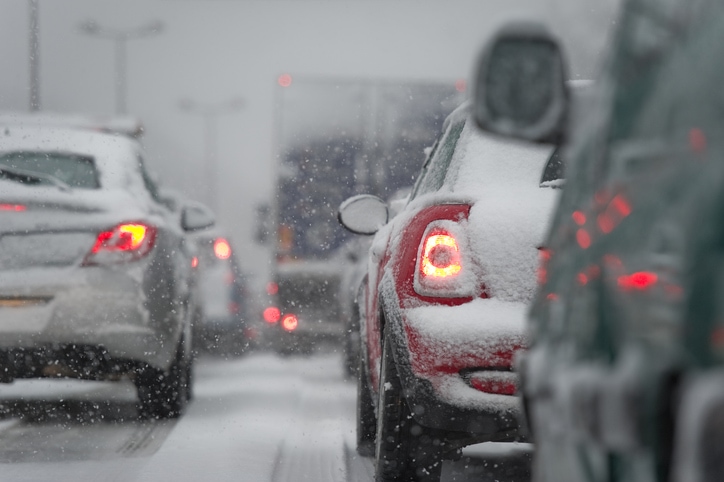Stopping distance and road conditions

Feb. 22, 2019. According to Transport Canada, speeding is a factor in 27% of fatal car accidents and 19% of injuries. Driving too fast for current road conditions, even if you are driving at the posted speed limit, is as dangerous as speeding. How fast a vehicle is moving contributes to the outcome of an accident because the impact of a collision increases with speed.
Stopping time and distance
Knowing your stopping time and distance will help your judgment in situations that could potentially lead to a collision. Stopping time is determined by adding together perception time, reaction time, and braking time.
Perception time
Perception time is how long it takes a driver to process a situation and recognize the need to stop. This is about ¾ of a second for most drivers, longer for inexperienced drivers. The distance the car travels during this time is called perception distance.
Reaction time
Reaction time is how long it takes a driver to react to the situation by moving their foot from the accelerator to the brake. Average reaction time is ¾ of a second and the distance traveled during this time is reaction distance. Perception and reaction times can take a lot longer if a driver is impaired, tired, or distracted.
Braking time
Braking time is how long the car takes to stop after the driver hits the brakes and braking distance is how far it travels before it stops. Breaking distance increases exponentially with how fast the vehicle is traveling.
Total stopping distance
Total stopping distance is determined by adding together perception distance, reaction distance, and braking distance. The faster the vehicle is traveling, the longer the total stopping distance.
Stopping distance is also influenced by many other factors, including the type of road surface, the gradient of the road, weather conditions, the size of the vehicle, and the inflation and condition of the vehicle’s tires, and the condition of the brakes.
Total stopping distances of a medium size car with good tires on a smooth, dry road
|
Speed (km/h) |
Total stopping distance (m) |
|
40 |
26 |
|
50 |
35 |
|
60 |
45 |
|
70 |
56 |
|
80 |
69 |
|
90 |
83 |
|
100 |
98 |
|
110 |
113 |
Total stopping distances of a medium size car with good tires on a smooth, wet road
|
Speed (km/h) |
Total stopping distance (m) |
|
40 |
30 |
|
50 |
41 |
|
60 |
54 |
|
70 |
69 |
|
80 |
85 |
|
90 |
103 |
|
100 |
122 |
|
110 |
143 |
Stopping distance on icy pavement
Posted speed limits assume ideal road conditions, so keep in mind that winter conditions can have a huge impact on stopping distance. A vehicle traveling at 50km/hr on an icy road can have a total stopping distance of 87m or more and a vehicle traveling at 80km/hr can have a stopping distance of more than 200m.
Why winter tires are important
All-season and summer tires are made of a harder rubber than winter tires to increase their tread life. When the temperature drops below 7 degrees Celsius, they become less flexible and provide less traction.
Winter tires with the mountain and snowflake symbol provide more traction on wet and icy roads and could be the difference between stopping safely and getting in an accident.
Driving on dirt or gravel roads
Dirt and gravel can cause reduced traction and skids when braking, so give yourself more time to stop, reduce your speed, and increase your following distance behind other vehicles.
Accelerating safely
Knowing how to accelerate properly will make you a better driver.
- Do not speed but do not drive slower than the speed of traffic.
- Accelerate smoothly (do not let your tires spin)
- Do not change your speed unnecessarily
- Adjust your speed to the current road conditions
- Check your speed periodically
Braking safely
Knowing how to stop properly is important in avoiding a collision.
- Start braking early. Even ABS brakes are not effective on ice so slow down in advance and avoid breaking suddenly on ice.
- Finish braking smoothly by releasing pressure on the brakes slightly and then reapplying it before coming to a full stop
Keeping these facts in mind will help you be a safer driver in less than ideal conditions.



.jpg?300x300)